Dinosaurs have maintained an unrivaled grip on Hollywood’s imagination for nearly a century, evolving from stop-motion curiosities to billion-dollar franchise centerpieces. Their enduring appeal transcends generations, technological revolutions, and changing audience tastes. From the groundbreaking effects of “Jurassic Park” to children’s animated features and documentary-style productions, these prehistoric creatures consistently draw filmmakers and audiences alike into theaters. This persistent fascination reveals something fundamental about human curiosity and our relationship with the natural world’s most spectacular extinct inhabitants. Let’s explore the many reasons why dinosaurs remain Hollywood’s most reliable prehistoric stars.
The Primal Appeal of the Unimaginably Ancient

Dinosaurs occupy a unique psychological space as creatures that genuinely ruled our planet yet remain just beyond the reach of human experience. Their existence is scientifically proven, yet they feel almost mythological in scale and nature. This paradoxical quality – being simultaneously real and fantastical – provides filmmakers with a canvas unlike any other in storytelling. The 165-million-year reign of dinosaurs dwarfs humanity’s brief presence on Earth, creating an inherent drama in their very existence. Hollywood taps into this primal fascination with creatures that dominated our planet for so long yet disappeared so completely. The knowledge that these magnificent animals once walked the same ground we now inhabit creates an immediate connection that transcends time, allowing audiences to feel genuine wonder while still recognizing the scientific reality underlying these cinematic creations.
Technological Showcases and Visual Spectacle
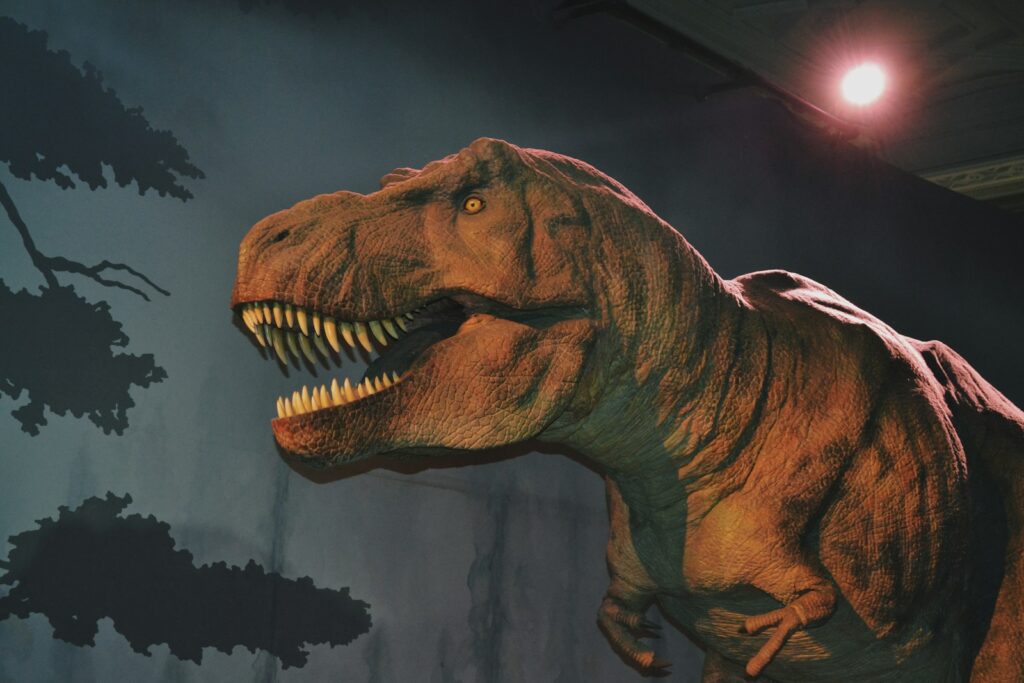
Dinosaur films have consistently served as perfect vehicles for showcasing cutting-edge visual effects technology. From Willis O’Brien’s pioneering stop-motion work in 1925’s “The Lost World” to the revolutionary CGI of “Jurassic Park” in 1993, dinosaurs have pushed filmmaking technology forward. Each new dinosaur blockbuster presents an opportunity for studios to demonstrate advances in visual effects capabilities, creating increasingly realistic prehistoric creatures. The rendering of believable dinosaur skin textures, movements, and behaviors has become a technical benchmark for the industry. This technological evolution parallels scientific discoveries, with each generation of films incorporating newer paleontological findings into their visual presentations. For audiences, this translates to increasingly immersive experiences where the line between fantasy and scientific reconstruction blurs beautifully. The perpetual drive to create more convincing dinosaurs ensures these creatures remain at the forefront of cinematic innovation.
Scientific Discovery as Narrative Fuel
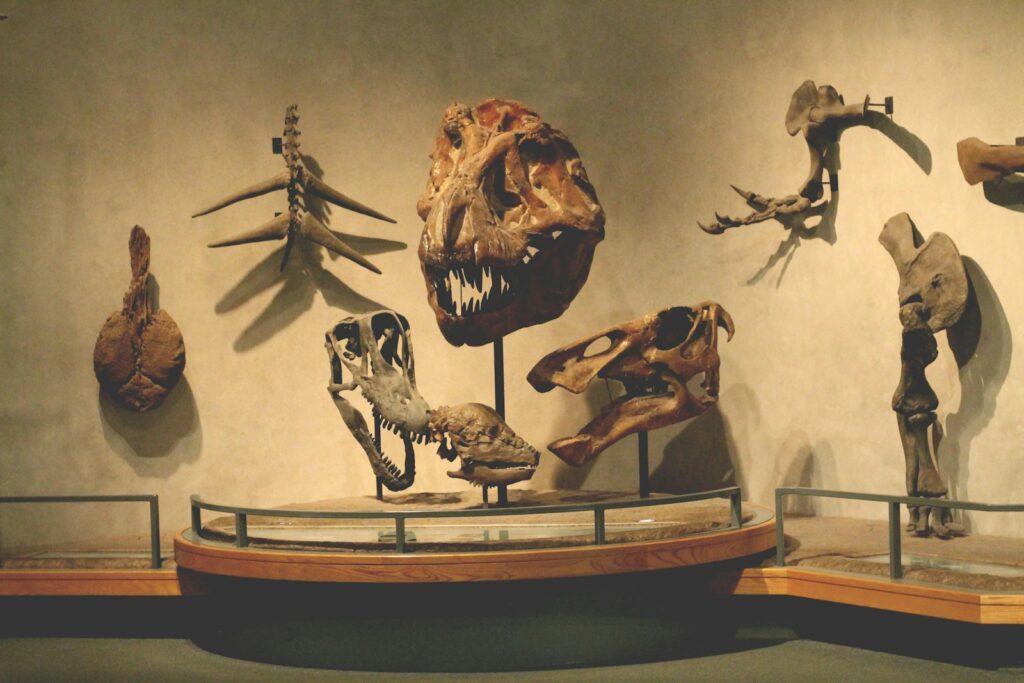
The evolving scientific understanding of dinosaurs provides Hollywood with a constantly refreshing narrative well. Each major paleontological discovery—from the realization that many dinosaurs had feathers to new theories about their social behaviors—offers filmmakers fresh material to incorporate into their stories. This continuous scientific evolution keeps dinosaur films feeling contemporary despite their ancient subject matter. The tension between established dinosaur imagery and emerging scientific evidence creates built-in dramatic conflicts that screenwriters eagerly exploit. Films like “Jurassic World” directly addressed this by showing how the public might prefer familiar but scientifically outdated dinosaur depictions over more accurate but less imposing versions. This interplay between science and spectacle allows dinosaur films to maintain cultural relevance while simultaneously acknowledging advances in our understanding. For audiences, these updates to familiar creatures create a compelling mix of nostalgia and discovery that few other film subjects can match.
The Perfect Blend of Wonder and Terror

Dinosaurs occupy a sweet spot in human psychology, balancing fascination and fear in perfect cinematic proportion. Unlike purely fictional monsters, dinosaurs carry the weight of historical reality while remaining safely extinct, allowing audiences to experience genuine terror with the reassurance of absolute safety. This psychological duality makes dinosaurs ideal antagonists that audiences simultaneously root against and marvel at. The iconic T. rex sequences in “Jurassic Park” exemplify this principle perfectly—viewers experience authentic fear while never losing their sense of wonder at witnessing such magnificent creatures. Even when depicted as villains, dinosaurs rarely evoke the disgust or hatred directed at human antagonists, instead maintaining their status as natural forces worthy of respect. This complex emotional response allows dinosaur films to navigate between genres, blending elements of horror, adventure, and even tragedy into cohesive narratives. Few other creatures can generate such a multifaceted emotional reaction while maintaining scientific credibility.
Multi-Generational Appeal and Marketing Potential

Dinosaurs possess remarkable cross-demographic appeal that makes them marketing powerhouses. Children typically develop dinosaur fascination as early as age three, while adults maintain interest through scientific curiosity and nostalgic connections to their childhood dinosaur phase. This broad appeal allows studios to market dinosaur-centered films to virtually every age bracket simultaneously. The cultural ubiquity of dinosaurs creates immediate recognition value, reducing marketing burdens compared to establishing entirely new fictional worlds or characters. The merchandising potential of dinosaurs is similarly inexhaustible, with everything from scientifically accurate models to stylized plush toys finding eager markets. Theme park attractions featuring dinosaurs consistently rank among the most popular, creating additional revenue streams beyond theatrical releases. This combination of marketing efficiency and merchandising potential makes dinosaurs particularly attractive to studios seeking reliable returns on blockbuster investments.
The Ethical Safety of Extinct Antagonists

In an era of increasing sensitivity toward cultural representation and animal rights, dinosaurs provide filmmakers with consequence-free antagonists. Unlike human villains who might raise issues of racial or cultural stereotyping, or contemporary animal threats that could negatively impact conservation efforts, dinosaurs can be depicted as fearsome predators without ethical concerns. A Tyrannosaurus can rampage through a film, devouring characters without generating protest from animal rights organizations or conservation groups. This ethical freedom allows filmmakers to create genuinely threatening creatures without navigating the complex social politics of depicting human or existing animal antagonists. The extinction of dinosaurs also permits more creative liberties in their representation, as no living experts can definitively contradict specific behavioral portrayals. This combination of creative and ethical freedom makes dinosaurs particularly attractive subjects for filmmakers seeking uncomplicated yet compelling threats for their characters to overcome.
Nostalgia Cycles and Franchise Potential

The lifelong fascination many people develop with dinosaurs creates powerful nostalgia cycles that studios can leverage across generations. Adults who grew up watching “The Land Before Time” or “Jurassic Park” eagerly introduce their children to dinosaur media, creating self-perpetuating audience renewal. This generational handoff allows dinosaur franchises to maintain relevance across decades, unlike many trendy properties that fade after their initial popularity wave. The “Jurassic” franchise demonstrates this phenomenon perfectly, successfully reviving itself with “Jurassic World” after a 14-year hiatus by appealing simultaneously to nostalgic adults and a new generation of dinosaur enthusiasts. The basic premise of dinosaurs returning to interact with modern humans provides a flexible framework that can incorporate contemporary themes while maintaining core appeal. Each iteration can update scientific understandings and visual presentations while preserving the fundamental attraction of seeing these ancient creatures brought to life, ensuring dinosaur franchises maintain both freshness and familiarity.
Narrative Versatility Across Genres

Dinosaurs demonstrate remarkable adaptability across film genres, from horror and action to comedy and children’s animation. This versatility allows studios to incorporate these creatures into diverse storytelling frameworks while maintaining their core appeal. In horror contexts, dinosaurs become unstoppable predators stalking human prey, while family films might portray the same species as misunderstood giants or even sympathetic protagonists. Animated features like “The Land Before Time” or “The Good Dinosaur” reimagine dinosaurs as emotionally complex characters with relatable struggles, while documentaries like “Walking with Dinosaurs” present them through a scientific lens. This genre flexibility extends dinosaurs’ marketability across different audience segments and distribution platforms. The basic template of humans encountering dinosaurs can be adjusted to virtually any tone or rating category without losing its fundamental appeal. Few other creatures offer filmmakers such narrative range while maintaining consistent audience interest regardless of the presentation style.
The “What If” Factor of Extinction
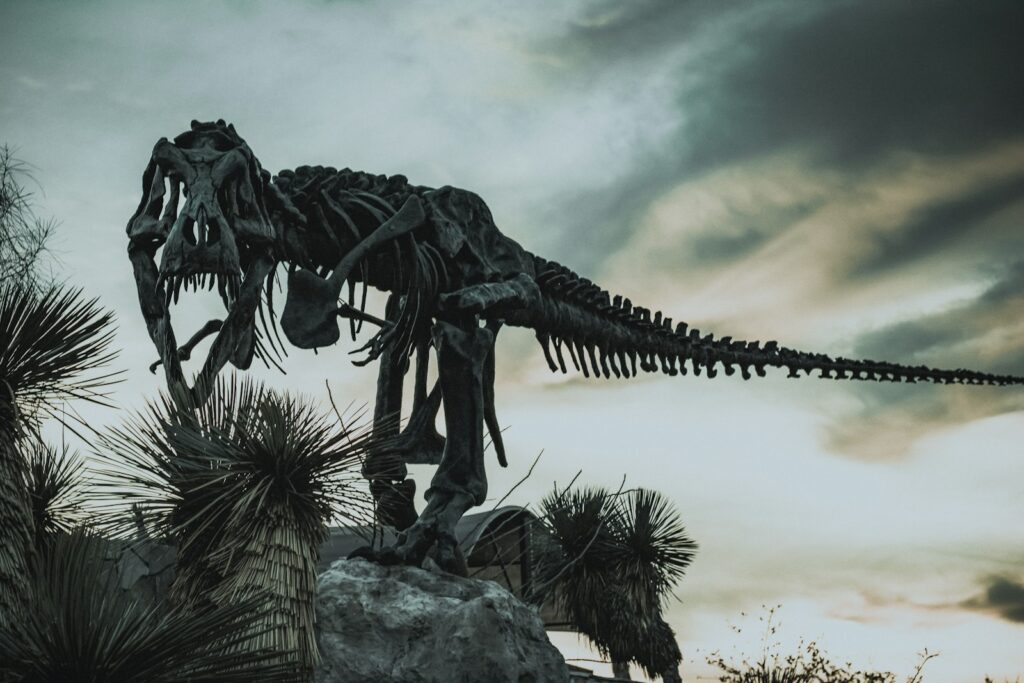
The abrupt extinction of dinosaurs creates a narrative vacuum filled with compelling “what if” scenarios that filmmakers eagerly explore. The dramatic cosmic accident that ended the dinosaurs’ reign introduces an element of contingency into Earth’s history that naturally generates alternative timeline speculation. Films like “The Good Dinosaur” explicitly address this by imagining a world where the extinction event never occurred, while the “Jurassic” franchise explores the consequences of artificially reversing this pivotal moment in Earth’s history. This extinction event creates a natural narrative break that allows filmmakers to construct speculative scenarios without contradicting established scientific understanding. The knowledge that mammals and eventually humans only rose to prominence because of dinosaur extinction adds philosophical weight to these cinematic thought experiments. This built-in counterfactual element gives dinosaur narratives a depth not available to stories about creatures that simply evolved or went extinct through gradual processes, providing screenwriters with rich thematic material beyond mere spectacle.
Global Cultural Resonance
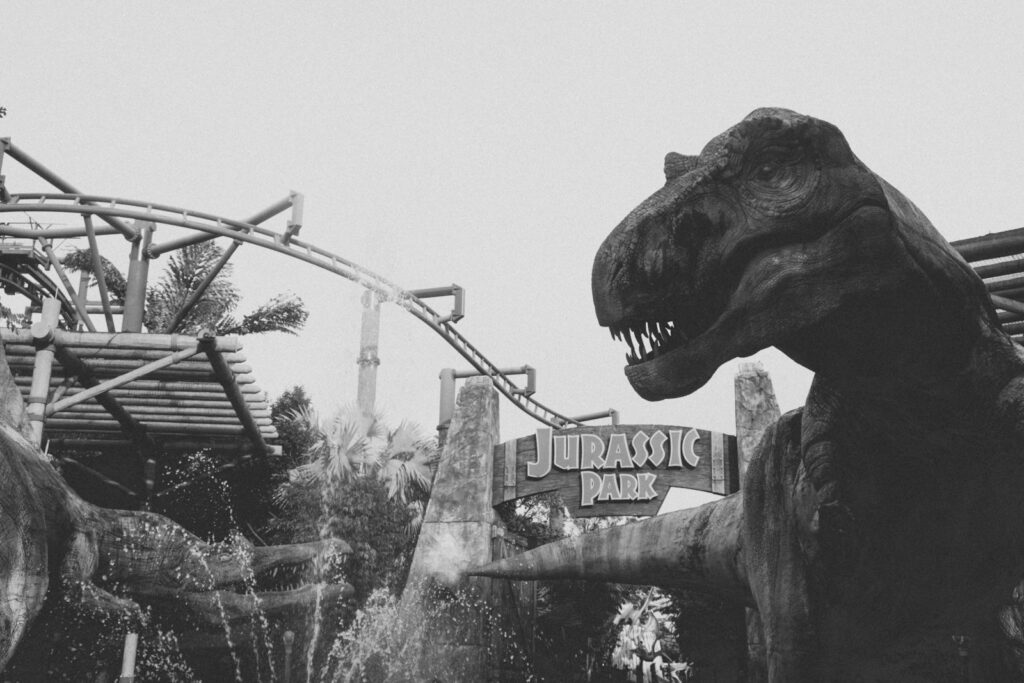
Dinosaurs enjoy rare status as universally recognized cultural touchstones that transcend geographic and cultural boundaries. Unlike mythological creatures tied to specific cultural traditions, dinosaurs belong equally to all human cultures as scientific discoveries from our shared planetary history. This universal recognition makes dinosaur films easily exportable to international markets without significant cultural translation requirements. Chinese audiences are just as familiar with the basic concept of a Tyrannosaurus as American or European viewers, creating ready-made global audience awareness. The non-cultural nature of dinosaurs also helps them avoid the political complications that might affect other international blockbusters, as prehistoric creatures carry no inherent national associations or symbolic baggage. This cultural neutrality combined with universal recognition makes dinosaurs particularly valuable intellectual property in an increasingly global film marketplace. Studios can confidently invest in dinosaur-centered productions knowing they have built-in appeal across virtually all major international markets.
Scale and Spectacle Unmatched in Nature

Dinosaurs offer filmmakers access to a scale of natural creature that simply doesn’t exist in the contemporary world. The largest dinosaurs dwarfed even the biggest modern land animals, creating visual spectacles impossible to achieve with existing creatures. The 85-foot length of a Brachiosaurus or the 7-ton weight of a Tyrannosaurus provides an inherent visual drama that requires no fictional embellishment to impress audiences. This natural scale allows filmmakers to create genuinely awe-inspiring moments based on scientifically accurate representations rather than fantastical exaggerations. The sheer physical presence of accurately portrayed dinosaurs creates immediate visual impact that resonates with deeply ingrained human instincts about predator-prey relationships and physical dominance. When a Tyrannosaurus towers over human characters, the size differential alone creates immediate dramatic tension without requiring additional narrative explanation. This built-in spectacle makes dinosaurs particularly effective in visual media like film, where their scale can be conveyed through careful framing and perspective techniques.
Metaphorical Flexibility

Dinosaurs serve as remarkably flexible metaphorical vehicles for exploring contemporary human concerns about technology, hubris, and our relationship with nature. The “Jurassic Park” franchise explicitly frames dinosaurs as symbols of human technological overreach and the unpredictable consequences of manipulating natural systems we don’t fully understand. This metaphorical adaptability allows dinosaur narratives to address changing social concerns while maintaining their prehistoric packaging. Films can recontextualize dinosaurs to represent nuclear power, genetic engineering, artificial intelligence, or various other technological anxieties depending on current social preoccupations. The fundamental “ancient meets modern” dynamic inherent in most dinosaur narratives creates natural opportunities for examining humanity’s relationship with the natural world and our place in evolutionary history. As cultural concerns shift, dinosaur narratives can seamlessly incorporate new thematic elements without losing their fundamental appeal or requiring significant reconceptualization. This metaphorical versatility ensures dinosaurs remain relevant commentaries on the human condition despite their prehistoric origins.
Conclusion
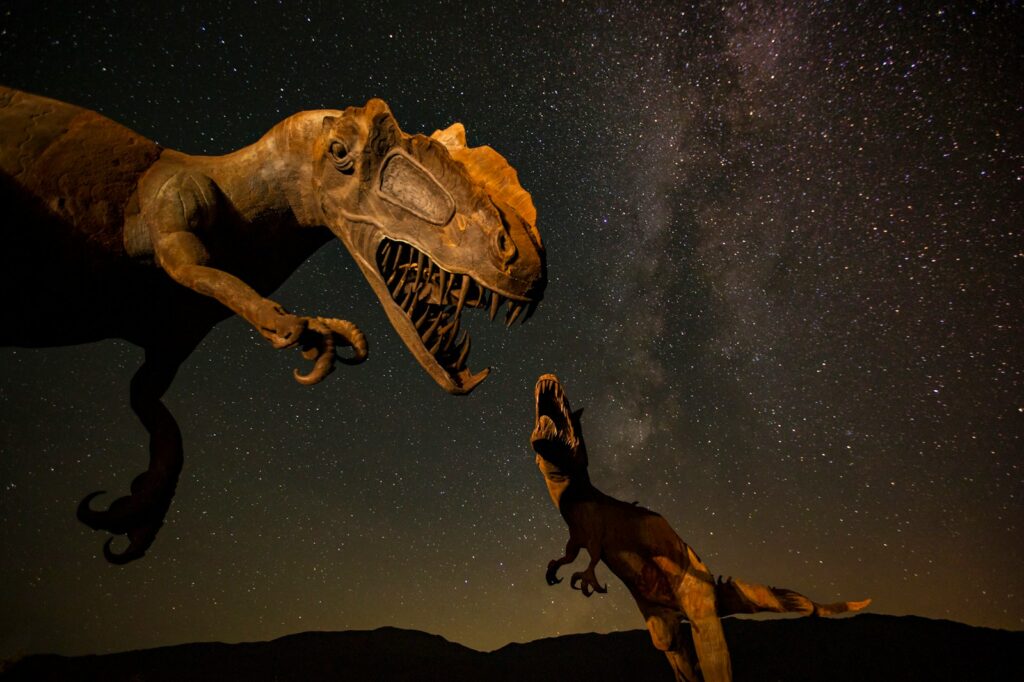
The enduring appeal of dinosaurs in Hollywood reflects their unique position at the intersection of scientific fact and spectacular wonder. These ancient creatures provide filmmakers with ethical freedom, marketing efficiency, and narrative flexibility while consistently pushing technological boundaries and capturing global audiences’ imaginations. The psychological sweet spot they occupy—being simultaneously real yet safely extinct—creates emotional responses unlike any other cinematic subject. As science continues unveiling new aspects of dinosaur biology and behavior, and as visual effects technology advances, these prehistoric creatures will likely remain among Hollywood’s most reliable and fascinating subjects. Their footprints, it seems, are permanently embedded not just in Earth’s geological record but in our cultural imagination as well.



